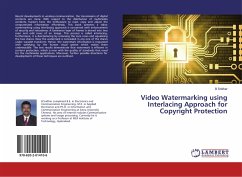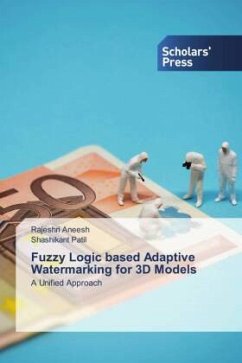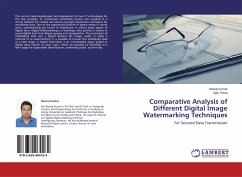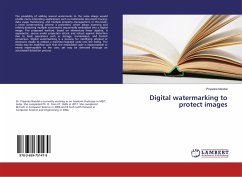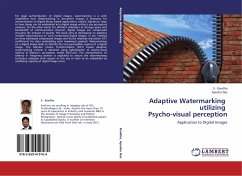
Adaptive Watermarking utilizing Psycho-visual perception
Application to Digital Images
Versandkostenfrei!
Versandfertig in 6-10 Tagen
36,99 €
inkl. MwSt.

PAYBACK Punkte
18 °P sammeln!
For legal authentication of digital images, watermarking is a well-established tool. Watermarking in document images is necessary for authentication of digital library based applications, mostly. Signature, logo or time stamp can be embedded into digital image without any perceptual variance. On the other hand, for efficient utilization of storage space and bandwidth of communication channel, digital images are compressed ensuring fair amount of quality. This book aims at developing an adaptive invisible watermarking on such compressed digital images. In our method we have addressed compressed...
For legal authentication of digital images, watermarking is a well-established tool. Watermarking in document images is necessary for authentication of digital library based applications, mostly. Signature, logo or time stamp can be embedded into digital image without any perceptual variance. On the other hand, for efficient utilization of storage space and bandwidth of communication channel, digital images are compressed ensuring fair amount of quality. This book aims at developing an adaptive invisible watermarking on such compressed digital images. In our method we have addressed compressed images and found relatively redundant DCT coefficients for data embedding with maximized payload. Watermarking on a digital image leads to identify the non-perceptible regions of a digital image. The Discrete Cosine Transformation (DCT) based adaptive watermarking scheme is obtained using hybridization of psycho-visual saliency & Watson's perception model (DCTune). The interpretation of saliency in frequency domain is exploited to ensure the watermarking technique adaptive with respect to the size of data to be embedded by modifying capacity of digital image cover.



